- Nyepi in Bali: The Island’s Day of Silence & Soul 🌑🎭
- 🌊 Days Leading Up to Nyepi: Melasti Rituals
- 👹 Nyepi Eve: Bali’s Wildest Night — The Ogoh-Ogoh Parade
- 🌌 Nyepi Day: A Magical 24-Hour Shutdown
- 🧳 What Travelers Should Know
- 🗓️ Suggested Itinerary
- ⚠️ Important Etiquette & Tips
- ⚠️ What to Avoid
- 💫 Final Thought
Nyepi in Bali: The Island’s Day of Silence & Soul 🌑🎭
Once a year, the entire island of Bali hits the pause button — no lights, no traffic, no music, no flights. Just 24 hours of deep silence. Welcome to Nyepi, Bali’s most sacred and surreal celebration. But don’t be fooled — before the stillness comes the storm: from fiery demon parades to seaside cleansing rituals, this is a festival of extremes. Here’s your ultimate guide to experiencing Bali’s “Day of Silence” like a local.
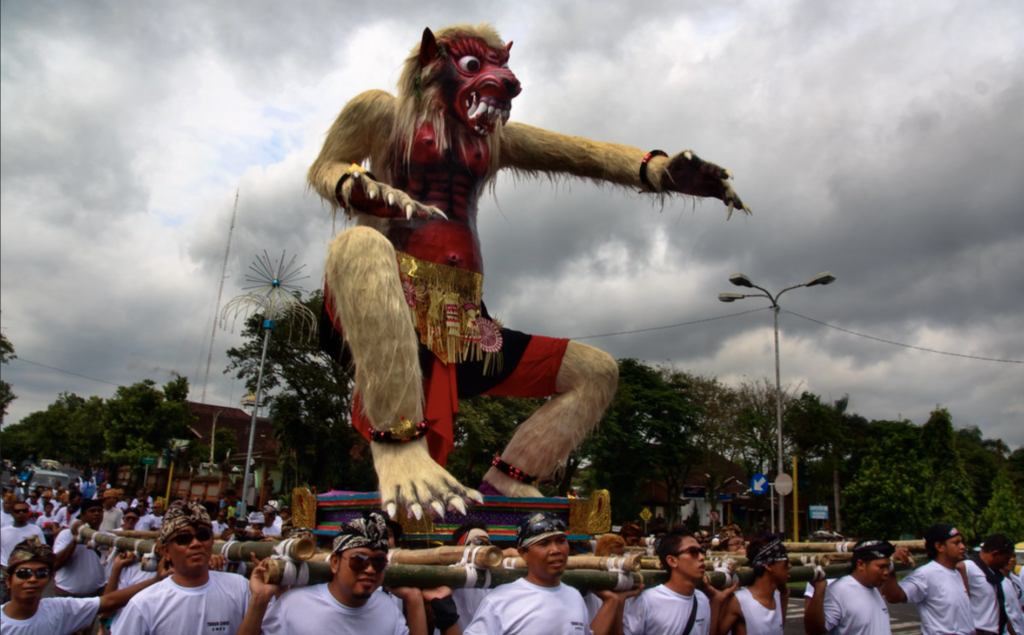
🔮 What is Nyepi?
Nyepi, also known as the Balinese New Year, follows the Saka lunar calendar, with its date changing every year, typically falling in March or early April (you may check out this wikipedia page to get the most updated date of Silent day!). It’s a day of spiritual reset and total silence, marked by rituals of purification, introspection, and quiet celebration.
🌀 A Mythical Origin
Legend has it that evil spirits once tried to deceive the gods by disguising themselves as humans. In response, the gods granted Bali one day of complete silence — tricking the spirits into thinking the island was uninhabited so they would leave.
🧘 Purpose & Meaning
For 24 hours, locals observe Catur Brata Penyepian, the Four Prohibitions:
- 🔥 No fire or light
- 🚶 No travel
- 🎉 No entertainment
- 🍽️ No eating (for those fasting)
It’s a time to disconnect from the world — and reconnect with your soul.
🌊 Days Leading Up to Nyepi: Melasti Rituals
In the days before Nyepi, Balinese Hindus perform Melasti — a beautiful ocean-side purification ceremony. Dressed in white, locals carry temple icons to the sea to be spiritually cleansed.
💡 Visitor Tip: Tourists are welcome to observe but should dress modestly — a sarong and sash are ideal, especially for women.
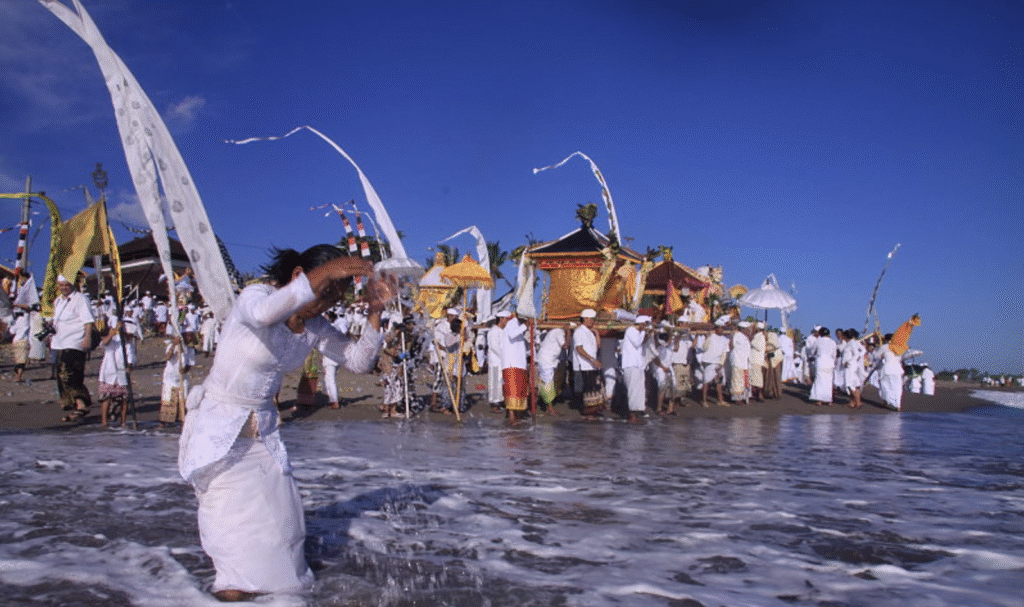
👹 Nyepi Eve: Bali’s Wildest Night — The Ogoh-Ogoh Parade
The night before Bali goes completely silent for Nyepi, the island throws one last wild party — and it’s epic. Enter the Ogoh-Ogoh, giant monster-like statues made from bamboo and paper, paraded through the streets like a spooky, colorful carnival. Some are scary, some are hilarious — think bikini-wearing beasts, big-bellied ogres, even crazy-looking grannies.
These creatures represent all the bad vibes and negativity of the past year. After a noisy, high-energy parade filled with dancing and drumming, the Ogoh-Ogoh are set on fire to chase away evil spirits and start the Balinese New Year fresh and clean.
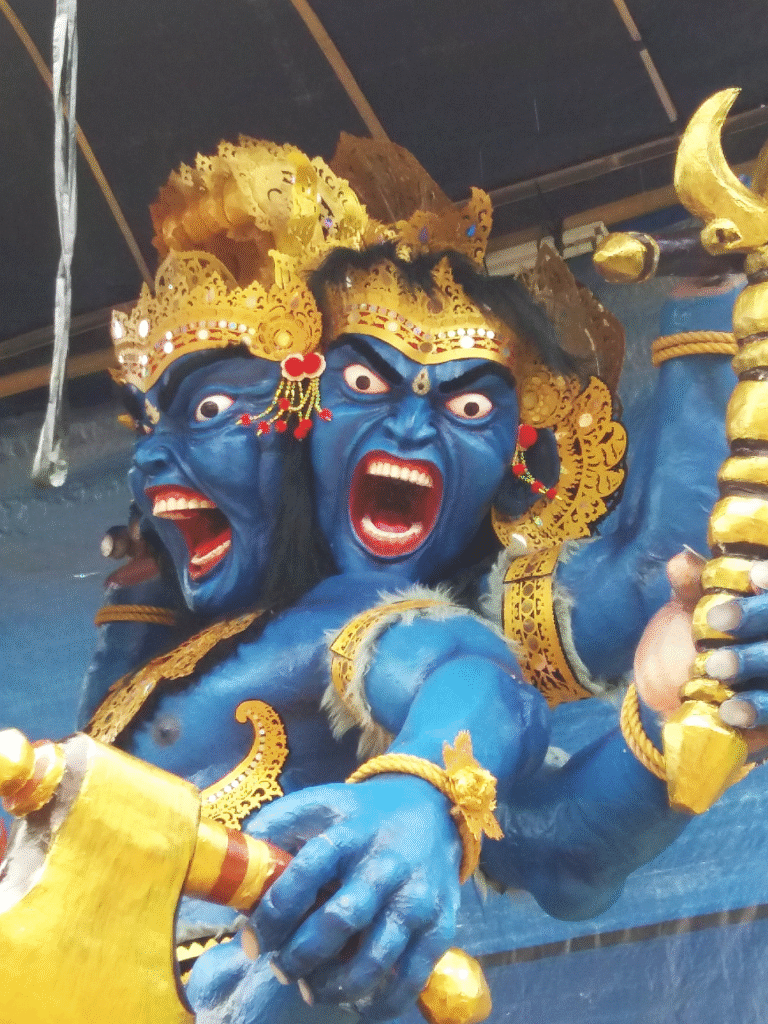

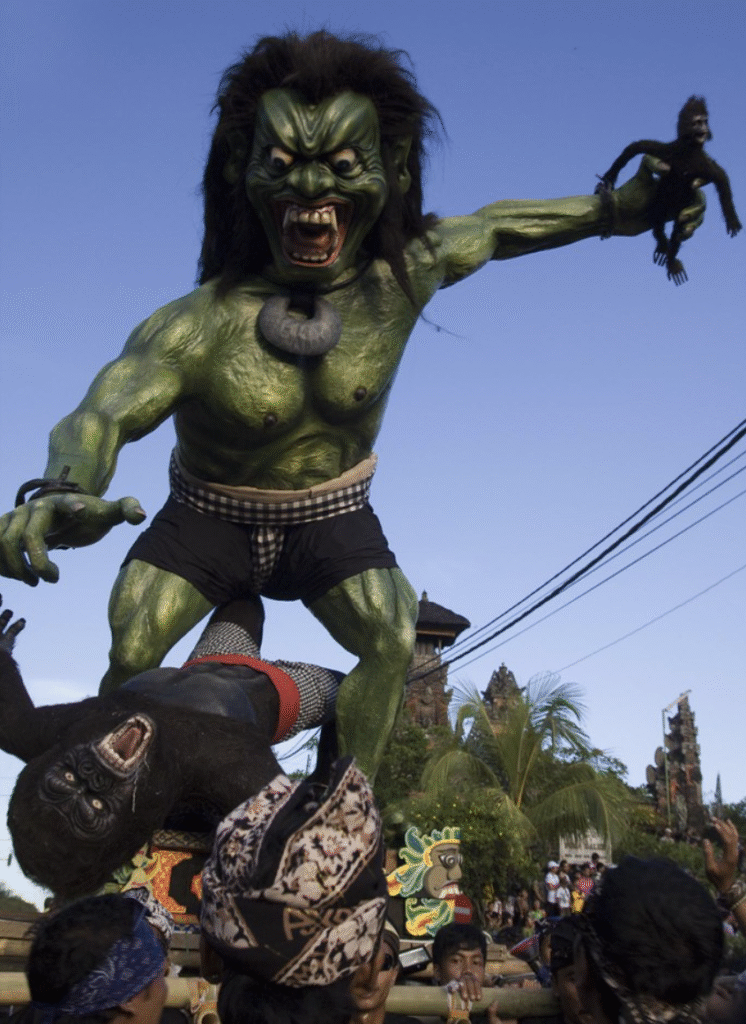
📍 Best Places to Watch:
- Ubud Palace – packed with dancers and monsters in a magical atmosphere
- Seminyak Beach – watch the fiery finale with an unforgettable sunset
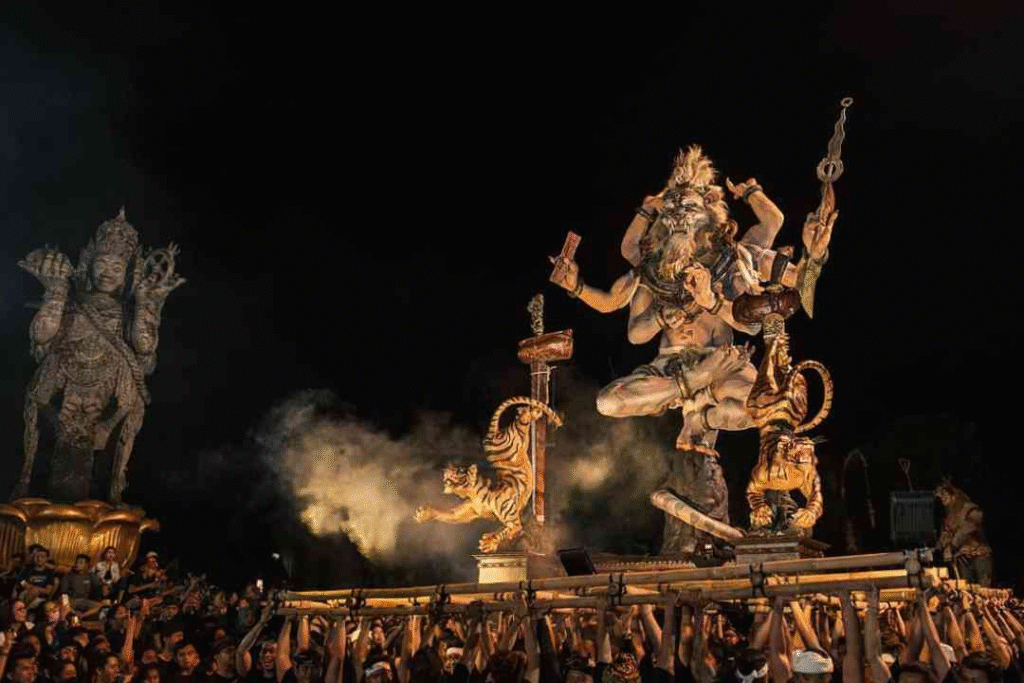
🕒 Pro tip: Grab a spot around 5–6 PM — it gets crowded fast, and you won’t want to miss a thing!
🌌 Nyepi Day: A Magical 24-Hour Shutdown
From 6 AM to 6 AM, Bali goes completely dark and silent. No vehicles. No airport operations. Even hotel guests are asked to stay inside and keep lights dimmed. The skies? Incredibly clear — it’s one of the few places in the world where you can see the Milky Way with the naked eye.
🌟 Best Stargazing Spots: Uluwatu cliffs, Jimbaran beachfront villas, or anywhere with minimal light.
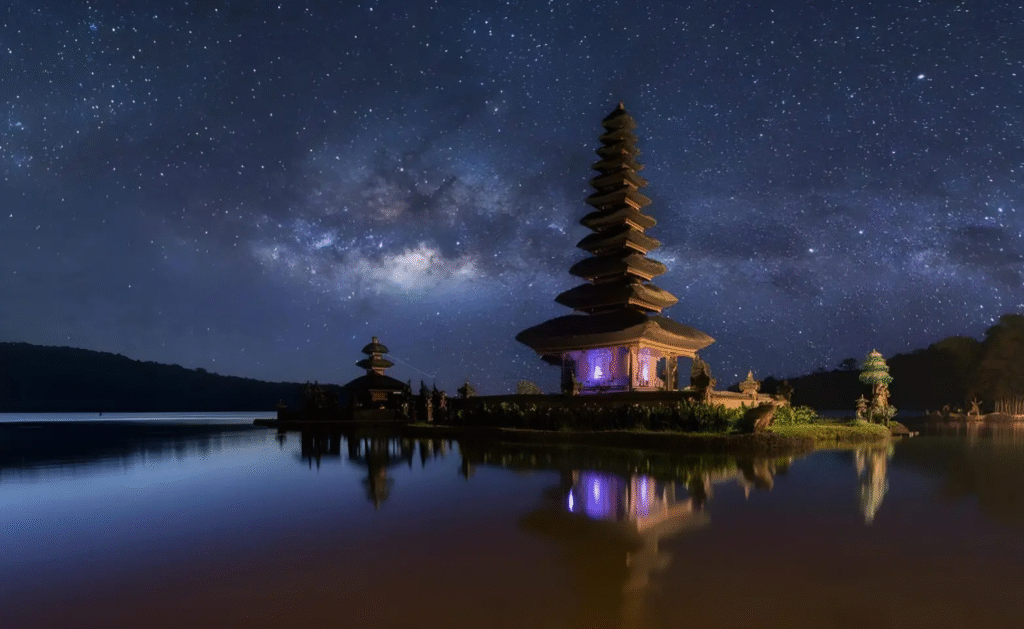
🧳 What Travelers Should Know
- 🛒 Stock up before Nyepi Day — stores and restaurants close the afternoon before
- 🏠 Stay smart — book a villa with a private pool for ultimate peace and privacy
- ✈️ Plan flights ahead — the airport is completely closed for 24 hours during Nyepi
🗓️ Suggested Itinerary
🧘♀️ Days 1–2: Explore Ubud’s Spiritual Side
- Learn to make Canang Sari (Balinese offerings) in a hands-on workshop
- Visit Tirta Empul Temple for a ritual purification bath
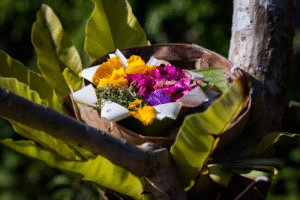
🎭 Day 3: Parade Night
- Head to Kuta or Ubud for the Ogoh-Ogoh parade — second-floor cafés along main streets offer the best overhead views for photographers
🤫 Day 4: Embrace the Silence
- Stay in, reflect, read, or stargaze by the pool. Let Bali’s energy wash over you.
⚠️ Important Etiquette & Tips
🚫 No drones — aerial activity is strictly prohibited
🚫 No long selfie sticks — poles may require village permission during parades
🚫 Avoid black clothing — traditionally considered to attract negative energy
⚠️ What to Avoid
- Traffic jams before the parade — arrive in viewing zones by late afternoon
- Airport closure — no flights during Nyepi; book accordingly
- Photography bans — some villages don’t allow tourists to shoot close-up ritual moments
- Food prep issues — let your hotel know dietary needs in advance; no meat is cooked on Nyepi
💫 Final Thought
“Nyepi reminds us that healing isn’t always about escaping noise — it’s about finding peace within the silence.”
Whether you’re dancing under the glow of a demon parade or watching stars in perfect silence, Nyepi isn’t just a holiday — it’s a spiritual journey. If you’re lucky enough to be in Bali during this time, embrace it fully. You’ll leave quieter, calmer, and more connected than ever before.
Need more Bali tips? Check out my personal guides below:
- Your First Bali Trip: 5 Days of Pure Magic
- [Ubud] Top Must-Do Experiences in Ubud That Will Steal Your Heart
- [Nusa Penida] Top 5 Things You’ll Love Doing in Nusa Penida, Bali
- [Canggu / Seminyak] How to Explore Canggu & Seminyak Like a Bali Insider
- [Kuta] Ultimate Kuta Escape: 6 Must-Do Things to Try Now
- You’ll Love These Inspiring Coworking Spaces in Canggu, Bali (Perfect for Digital Nomads)
- Final Hours in Bali: 5 Amazing Things to Do Before Takeoff

Leave a Reply